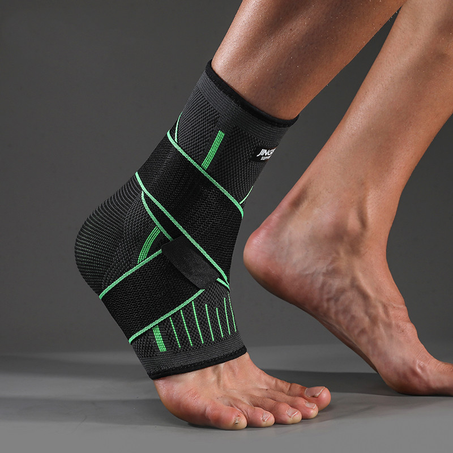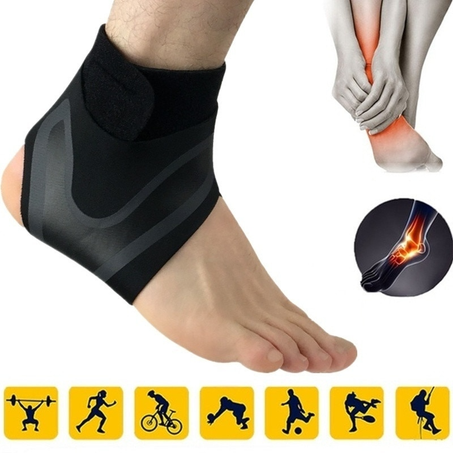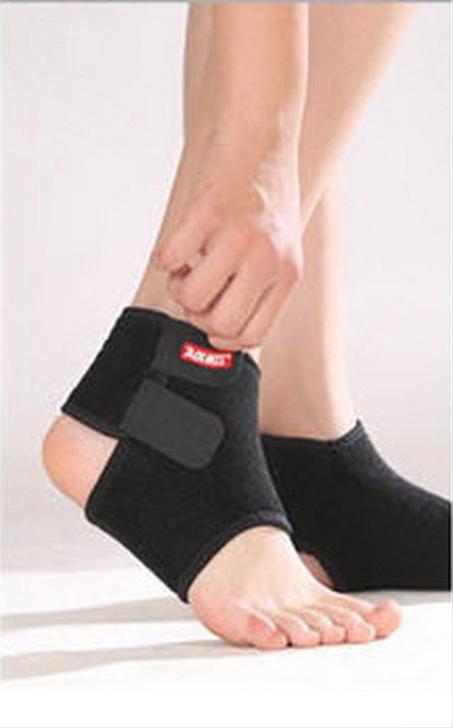OVERVIEW
What exactly is ankle pain?
Ankle pain is defined as any type of pain or discomfort that affects any part of the ankle. Ankle pain can occur for a variety of reasons. Injury, arthritis, and normal wear and tear are the most common causes. You may experience pain or stiffness anywhere around the ankle, depending on the cause. Your ankle may swell as well, and you may be unable to bear weight on it.
Ankle pain usually improves with rest, ice, and over-the-counter pain relievers. Injuries and arthritis can be treated by healthcare providers. Conditions can frequently be treated without surgery. However, if the injury is severe, such as a broken ankle bone, or if nonsurgical treatment fails to relieve your ankle pain, surgery is required.
What are the different parts of the ankle?
The musculoskeletal system includes your ankles. They support your body's weight and assist you in standing, balancing, and moving. The ankle joint is flexible, allowing you to point, flex, rotate, and move your foot from side to side.
The ankle is formed when the lower leg bones (tibia and fibula) meet the foot bone (talus). Ligaments connect these bones. The foot and ankle can move thanks to a complex structure of tendons, muscles, and other soft tissues. Because of its complexity, the ankle is particularly vulnerable to injury.
What is the prevalence of ankle pain?
Ankle pain and injuries are extremely common. If you are over the age of 65, you are more likely to experience ankle pain.
Participate in sports or activities that require jumping, side-to-side movement, or quick changes of direction.
You are overweight or obese.
Which of the following are the most common causes of ankle pain?
Ankle pain can be caused by a variety of injuries and conditions. The following are some of the most common ankle injuries:
- Bursitis is a condition in which fluid-filled sacs called bursae to cushion your bones as they move. Bursitis occurs when these sacs become inflamed and irritated.
- Fractures: Bones can break as a result of an accident or injury (fracture). Ankle fractures range in severity from mild to severe. A broken ankle can involve any bone in the ankle joint. Ankle swell
Flatfoot: A very low arch (or no arch at all) can cause ankle and foot pain and swelling. The condition occurs when children's arches do not develop normally as they grow.
- Gout is a type of arthritis caused by a buildup of uric acid throughout the body. Uric acid usually exits the body through the urine. Excess uric acid causes crystals to form in the joints. Gout in the ankle can be excruciatingly painful.
Infection: Swelling and pain in the ankle joint can be caused by a variety of infections, including cellulitis. A staph infection can cause osteomyelitis, a bone infection.
- ing and pain are symptoms of a broken ankle.
- Sprains: Ankle sprains are a common cause of ankle pain. When ligaments stretch or tear, it results in an ankle sprain. Sprained or twisted ankles occur when the ankle is pushed out of its normal position.
- Tendonitis is a soft-tissue injury caused by irritated, inflamed tendons. Tendons are the fibrous bands that connect muscles to bones. A tendon can tear at times (such as an Achilles tendon rupture). A ripped tendon may necessitate surgical repair.
Ankle pain can be caused by a variety of diseases, disorders, and conditions. These are some examples:
- Arthritis: Ankle arthritis can cause pain and stiffness in the ankle joint. Arthritis develops when cartilage (tissue in joints that cushions bones) deteriorates. Bones rub together as a result of the breakdown. Arthritis can be caused by injuries or overuse, and it is more common in people over the age of 65. Ankle arthritis can be caused by a variety of conditions. Rheumatoid arthritis and osteoarthritis are two common types.
What can I do to get rid of ankle pain?
Most ankle pain improves with rest, ice, and over-the-counter pain relievers. Follow your provider's instructions for at-home ankle pain treatments. Your provider may advise you to use the RICE method (rest, ice, compression, and elevation). Consult your provider if your ankle still hurts after a few days of at-home care.
The following are the most common home remedies for ankle pain:
- Rest: If you have an injury, such as a sprain, you should take it easy for a while. Consult your healthcare provider about how long you should rest. Crutches or a walking boot can assist you in getting around without putting pressure on your ankle.
- Compression: Ask your provider if you can wrap an elastic bandage around your ankle to reduce inflammation. Take care not to wrap it too tightly.
- Elevation: Elevating your ankle above your heart reduces swelling. You can also try sleeping with your foot elevated.
- Footwear with adequate support: Make sure your shoes provide adequate support for your feet and ankles. Avoid wearing flip-flops, sandals, or shoes that are too big. When participating in sports, it is especially important to wear appropriate footwear. Basketball and volleyball are two sports that can cause ankle injuries if not done properly.



